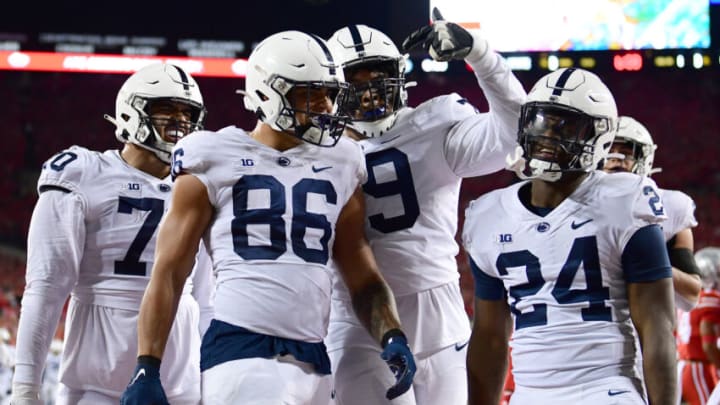Penn State football: would removing divisions help PSU?

Since the addition of the College Football Playoff, a new era of college athletics has been ushered in. With more revolutionary ideas such as the transfer portal and NIL, college football is changing more rapidly than ever before.
Related Story. Can Penn State football have a repeat of 2016?. light
One of the newest ideas is to remove the divisions from each conference, ensuring that the best two teams compete for the championship–not just the division winners. This idea sounds nice on paper, but would it help or hurt Penn State football?
When did the Big Ten add divisions?
In 2011, the Big Ten introduced divisions for the first time. The divisions were called the “Leaders” and “Legends” and, quite frankly, did not make much sense.
In the Legends division, Iowa, Michigan, Michigan State, Minnesota, Nebraska, and Northwestern competed for a shot at the Big Ten title game; meanwhile, the Leaders division was home to Illinois, Indiana, Ohio State, Penn State, Purdue, and Wisconsin.
2012 was the first year of a down period in Penn State football history following the NCAA sanctions set in 2011. In 2011, however, Penn State captured the first division title in program history, finishing the season with a 9-3 record before losing to Houston in the TicketCity Bowl.
In 2014 the Big Ten changed from the Leaders v Legends system to a geography-based division system: East vs. West. Although the layout of these divisions made more sense on paper, the Big Ten missed one major flaw: all of the best teams were in the east.
Michigan, Michigan State, Penn State, and Ohio State were all put together to compete in a bloodbath of a schedule. On the west side, Nebraska, Wisconsin, and Iowa were thought to be the leading programs in contention; however, Nebraska has averaged about five wins per season since then, and Northwestern has won the division twice.
The teams in the east were left punching it out amongst one another, with the occasional crossover game against Wisconsin, Iowa, etc., making its way onto the schedule. Since this realignment, all four major programs in the Big Ten East have won a Big Ten title–Penn State most recently in 2016–and many of the conference title games have been blowouts.
On top of the continuous domination and blowouts handed out by the Big Ten East, Wisconsin has seen a decline in recent years, Iowa has not won the conference since 2004, and Northwestern has made two of the past five Big Ten title games–losing both to Ohio State. With the apparent gap between east and west, many have questioned the Big Ten’s system for choosing its champion.